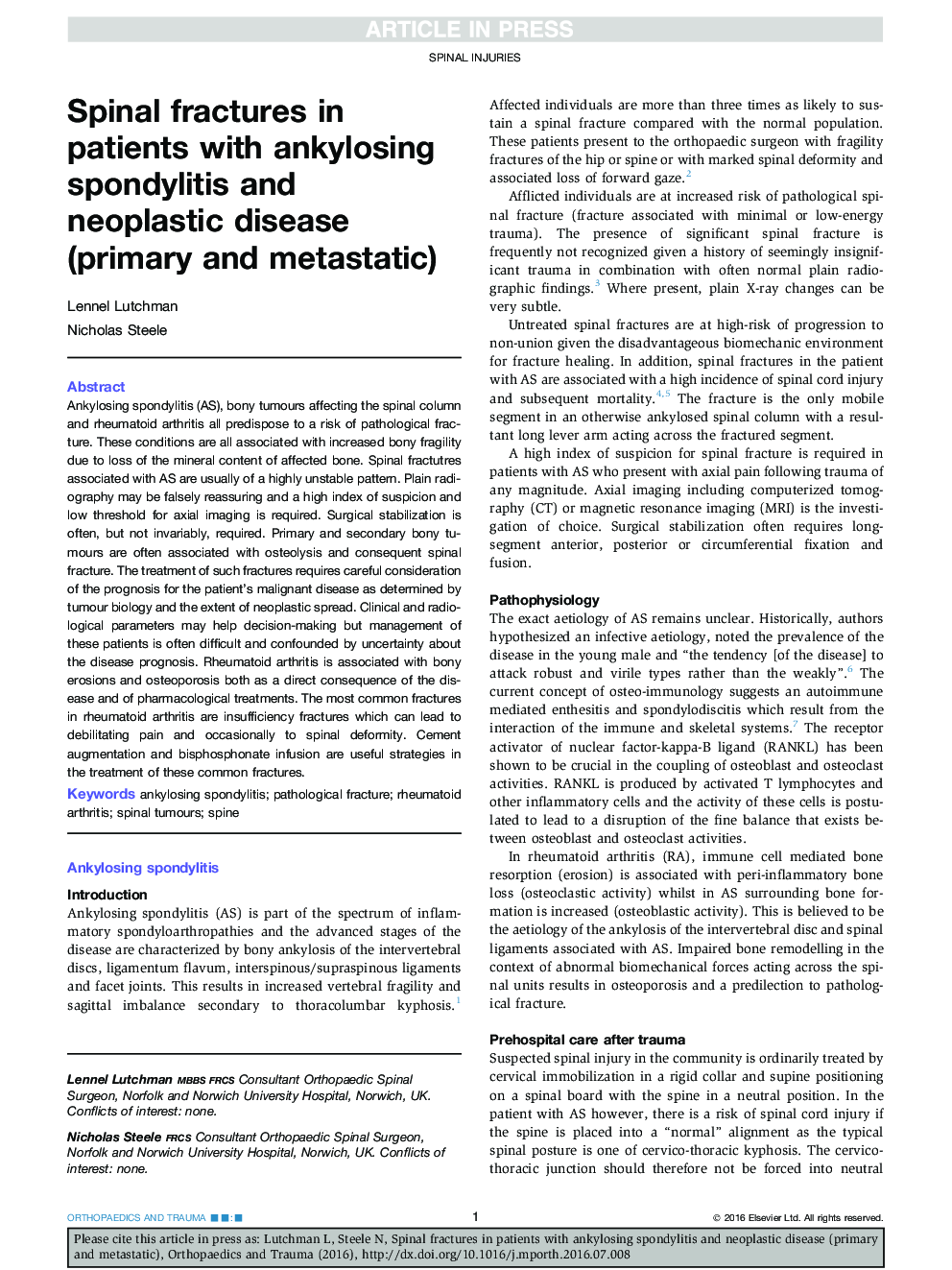| Article ID | Journal | Published Year | Pages | File Type |
|---|---|---|---|---|
| 8802134 | Orthopaedics and Trauma | 2016 | 10 Pages |
Abstract
Ankylosing spondylitis (AS), bony tumours affecting the spinal column and rheumatoid arthritis all predispose to a risk of pathological fracture. These conditions are all associated with increased bony fragility due to loss of the mineral content of affected bone. Spinal fractutres associated with AS are usually of a highly unstable pattern. Plain radiography may be falsely reassuring and a high index of suspicion and low threshold for axial imaging is required. Surgical stabilization is often, but not invariably, required. Primary and secondary bony tumours are often associated with osteolysis and consequent spinal fracture. The treatment of such fractures requires careful consideration of the prognosis for the patient's malignant disease as determined by tumour biology and the extent of neoplastic spread. Clinical and radiological parameters may help decision-making but management of these patients is often difficult and confounded by uncertainty about the disease prognosis. Rheumatoid arthritis is associated with bony erosions and osteoporosis both as a direct consequence of the disease and of pharmacological treatments. The most common fractures in rheumatoid arthritis are insufficiency fractures which can lead to debilitating pain and occasionally to spinal deformity. Cement augmentation and bisphosphonate infusion are useful strategies in the treatment of these common fractures.
Related Topics
Health Sciences
Medicine and Dentistry
Orthopedics, Sports Medicine and Rehabilitation
Authors
Lennel Lutchman, Nicholas Steele,
